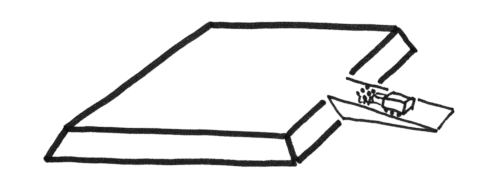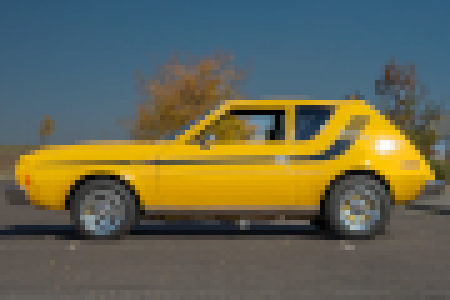Updated: Category: Architecture
The lure of platforms
Any self-respecting IT team is building some kind of platform these days. And for good reasons: platforms can harmonize all those elements that aren’t visible to the user but require heavy engineering.
The platform concept was popularized by car manufacturers some decades ago when they realized that a ton of engineering effort goes into technical and safety components like engine, transmission, suspension, and anti-lock brakes, most of which aren’t visible to the customer visiting the dealership. Instead, customer appreciate the shape of the car, the interior finishing, and the suppleness of the seats.

A modern car platform
It’s a logical move then, to conduct the base engineering effort once and reuse much of it across the model line. This is done by putting different “hats” or “skins” on top of the shared platform. One of the most successful examples is Volkswagen Group’s MLB platform, which is a modular platform that supports an amazing range of vehicles from the Audi A4 all the way to the Bentley Bentayga SUV.
Beware the pyramids
Inside IT, platforms typically look slightly differently – they’re often depicted as pyramids. The pyramid’s wide base layer takes care of all common functions while business configuration sits on top almost like the cherry on the cake. As highlighted in a chapter from my book, though, there’s a reason that most folks stopped building pyramids several thousand years ago: the huge effort required to lay the pyramid’s base layer makes it uneconomical.

The Great Pyramid at 30% completion. Effort completion, that is.
That’s not so different in IT where I have observed massive platforms being built just to find out that the users needed something different or that the market shifted in between.
So, it’s worth thinking a bit more when constructing platforms. A valuable hint can be found in an unexpected place: the supermarket.
An IT Fruit Basket
When building a platform, teams usually combine existing elements into a bigger piece. For modern delivery platform those could be a CI/CD system, a container runtime, monitoring, and a few other pieces. Many teams describe their platform by the list of ingredients, often represented as product names: Bamboo, Jenkins, Nexus, Spinnaker, Kubernetes, Prometheus, Grafana, and so on. We’re definitely in the exotic fruit department here…
While a long list of product names can be confusing to most business audience (cryptic open source project names don’t help), just listing the ingredients also doesn’t really highlight the value of building such a platform. Why wouldn’t application teams just install their own Jenkins, Spinnaker etc. or use the increasingly available hosted versions like Gitlab CI/CD.

A fancy fruit basket. Still, all you get is fruit.
Such platforms are like fruit baskets: they collate several items into a collection. However, in the end all the customer gets is a fruit. A fruit basket makes for a nice decoration, but people aren’t much worse off if they just buy the fruit itself. Actually, they may be better off because the basket may not include their favorite fruit or include fruit that they don’t like and aren’t willing to pay for. That’s why a fruit basket can’t command much of a margin over the ingredients, except maybe for festive occasions.
Serving Fruit Salad
A different way to buy fruit is in form of a prepared and packaged fruit salad. Fruit salad fetches a significantly higher margin: many fruit salads clock in at over 10 Euros per kilogram while apples and oranges go for 2.99.

Fruit salads fetch a much higher price.
Fruit salads are also basically fruit. However they’re cut, assembled, and packaged into a ready-to-eat meal. Unlike the fruit basket, the fruit salad is more than the sum of its parts:
- A good fruit salad will balance texture and sweetness regardless of the size of a fruit. If you cut one pear and one watermelon, it won’t.
- Fruit salads scale down: they’re available in small portions unlike melons.
- Fruit salads are convenient. Customers don’t need to peel or cut. This can be extremely handy, for example when boarding an airplane.
- Fruit salads enable new use cases: you can eat while on the run, it doesn’t t crush in your luggage, etc.
So, while fruit salad is basically nothing more than cut-up fruit, it’s a whole different product with a different value proposition. That’s why they fetch a higher margin.
Platform Considerations
Translating this back into IT platforms, we can learn a good bit from fruit salads. Too many platforms define themselves by the tools and products they comprise: I built a Gitlab / Spinnaker or BitBucket / Bamboo / Xebia platform. That’s fruit basket - all the customer gets are some fruits and increasingly those fruits can also be had directly from the vendor.
To make your platform be more than just the sum of the pieces it needs to be tightly integrated and automated. How easy is it to sign up and get access to your platform? Are there standard settings to get me going easily? Does your platform yield additional benefits like organization-wide transparency? Can you give me aggregate, apportioned billing?
Naturally, a fruit salad-style platform will be more opinionated, meaning it doesn’t need to be all things to all people. Customers will be more likely to accept that if the integration is smooth because they get more value. Opinionated fruit baskets are a tough sell.
Just like with fruit salad, a good platform will still let people pick out their favorite fruit if they absolutely so desire. The value they get should grow proportionally with the number of pieces they are consuming.
Maintaining a margin
Being more than the sum of the parts is particularly important as the cloud providers and other vendors aren’t standing still. The increasing integration of tools into the base cloud platform puts additional pressure onto the fruit basket model. If your platform is built by internal IT, it’s likely to have recover the development cost. In that case you’d want to be sure to offer more than just a collection of pieces.
So, now we know that Starbucks isn’t the only place to learn about IT architecture and strategy. The fruit section is equally insightful!
Grow Your Impact as an Architect

The Software Architect Elevator helps architects and IT professionals to take their role to the next level. By sharing the real-life journey of a chief architect, it shows how to influence organizations at the intersection of business and technology. Buy it on Amazon US, Amazon UK, Amazon Europe




